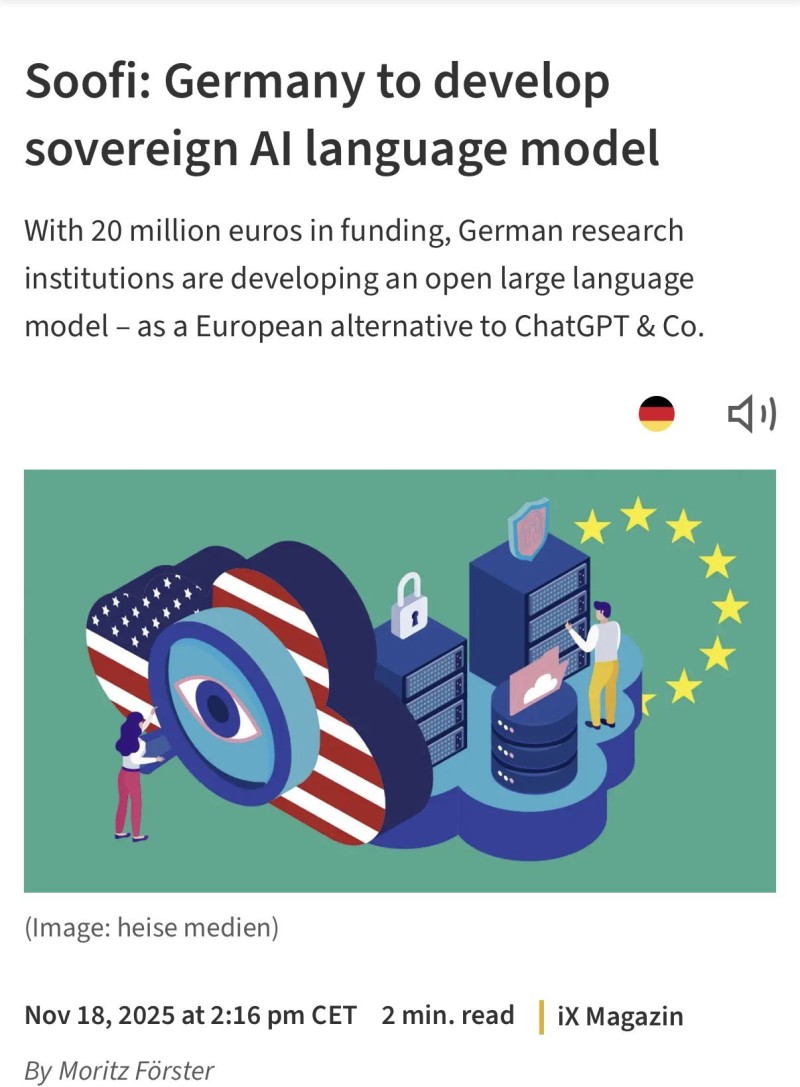⬤ Germany's rolling out a €20 million initiative to build a sovereign large language model, and people are already questioning whether that's realistic. The project's being positioned as Europe's answer to major U.S. AI platforms, with German research institutions expected to take the lead on development. It's part of the EU's bigger push for digital sovereignty—basically wanting to control their own tech infrastructure instead of relying on American companies.

⬤ Here's the thing though: €20 million sounds like a lot until you compare it to what the big players are spending. Major tech companies are throwing billions at AI development—compute infrastructure alone costs a fortune, not to mention dataset acquisition, model training, and years of research cycles. That massive gap has a lot of people worried that Germany's program is underfunded from the start and might struggle to build anything that can actually compete with what's already out there. It's hard to see how this budget matches up against the rapidly advancing international models that have way more resources behind them.
⬤ The initiative does fit into Europe's broader goals around technological independence, especially when it comes to data privacy, security, and cutting ties with non-EU platforms. Germany wants to develop an open, domestically controlled model, which makes sense strategically. But the big question is whether €20 million can actually support the massive compute scale, specialized expertise, and multi-year development timeline you need to build state-of-the-art AI systems. There's real concern that the program might not achieve the relevance it's aiming for in such a competitive global landscape.
⬤ This announcement adds fuel to ongoing conversations about where Europe stands in the global AI race. Let's be real—funding levels, hardware availability, and long-term strategic planning are what determine who wins in AI development these days. Germany's relatively modest investment just highlights the gap between European initiatives and the capital intensity you see in the regions dominating AI production. It shapes expectations about how quickly Europe can actually advance in large-scale model development when the competition is operating at a completely different financial scale.
 Eseandre Mordi
Eseandre Mordi

 Eseandre Mordi
Eseandre Mordi


